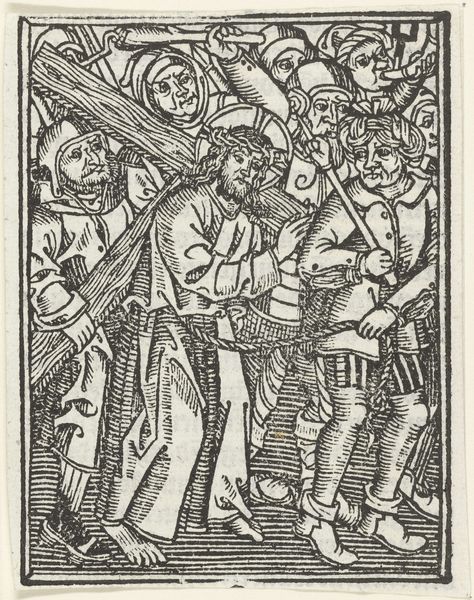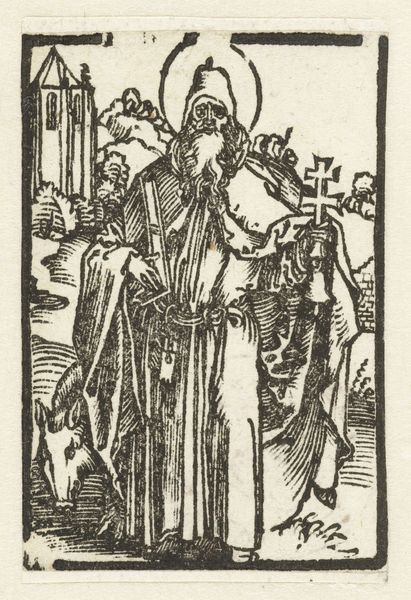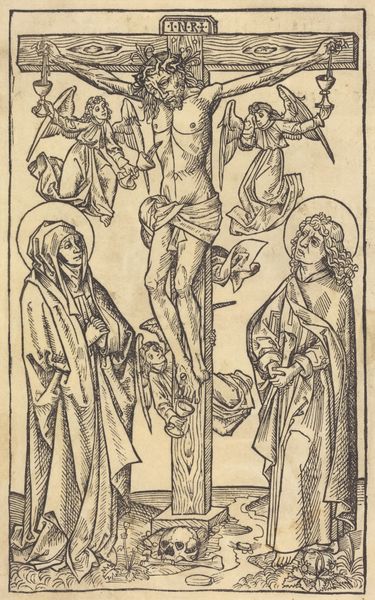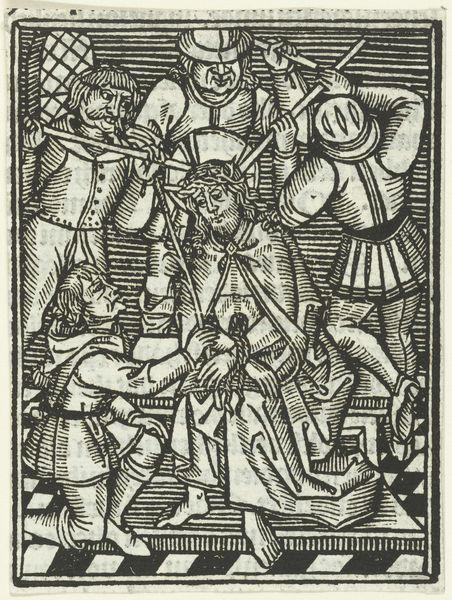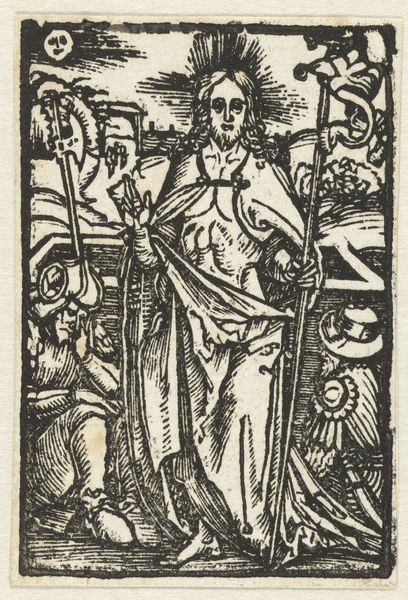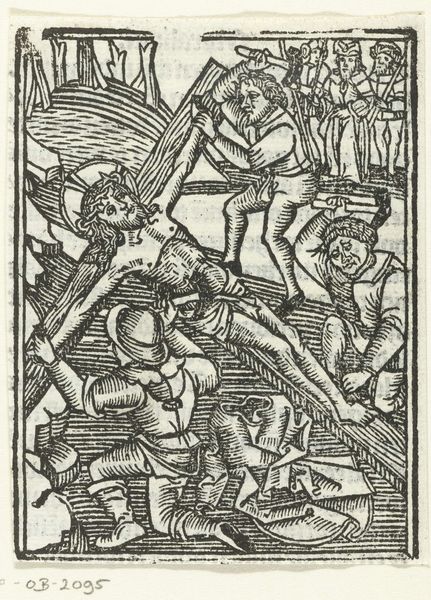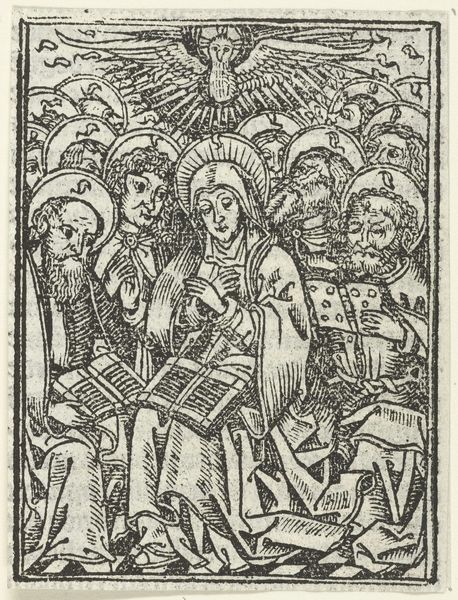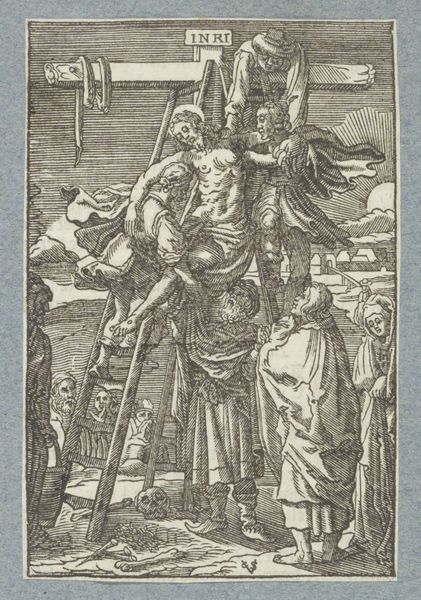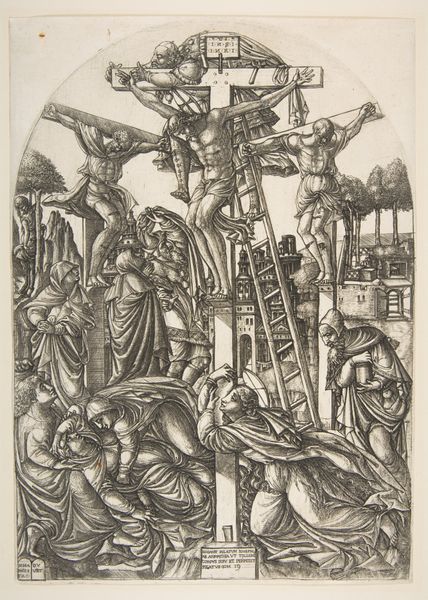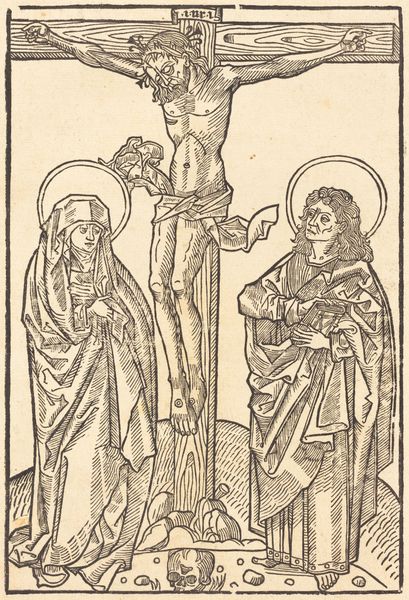
print, woodcut
#
narrative-art
# print
#
figuration
#
woodcut
#
history-painting
#
northern-renaissance
Dimensions: height 90 mm, width 68 mm
Copyright: Rijks Museum: Open Domain
Editor: This woodcut print, "Christus aan het kruis," made between 1490 and 1503 by Meester van de Delbecq-Schreiber-Passie, is intensely stark and emotional. The figures are so closely packed, and Christ's suffering seems almost tangible. How do you interpret this work, especially given its historical context? Curator: This piece serves as a powerful artifact of Northern Renaissance anxieties. The raw emotion, almost bordering on grotesque in the depiction of grief and violence, challenges idealized notions of the body often found in earlier religious art. Look at the figures: the women on the left, consumed by sorrow, contrast sharply with the armed men on the right, seemingly detached. What does that division tell us? Editor: It feels like a commentary on social roles, doesn’t it? The women express vulnerability, expected of them, while the men appear stoic and detached, embodying power…or a performance of it. Curator: Exactly. Consider, too, that prints like these were more accessible than paintings. They circulated widely, shaping popular piety and potentially fueling critiques of religious and social hierarchies. This isn't just a depiction of the crucifixion; it's a visualization of societal tensions, anxieties surrounding faith, power, and performative identity during a period of immense change. Editor: So the emotionality isn't just about religious piety, but also a reflection of broader social unease? Curator: Precisely. The artist uses the crucifixion narrative to explore issues of social and gendered expression, making it relevant to conversations even today about who is allowed to express pain and who is expected to remain silent. What do you make of the text in the banner at the top right of the cross? Editor: To be honest I missed it, but the words ‘vere filius Dei erat ille’ point to ideas of true identity… thanks to the close inspection, now it adds to the piece’s multi-layered perspective. Curator: Indeed. By engaging with these socio-political threads we unveil how this image speaks far beyond its surface religious subject matter. Editor: Thank you - looking through an intersectional lens really does amplify its voice, shifting our attention beyond pure suffering to its reverberations within power structures and social scripts.
Comments
No comments
Be the first to comment and join the conversation on the ultimate creative platform.

